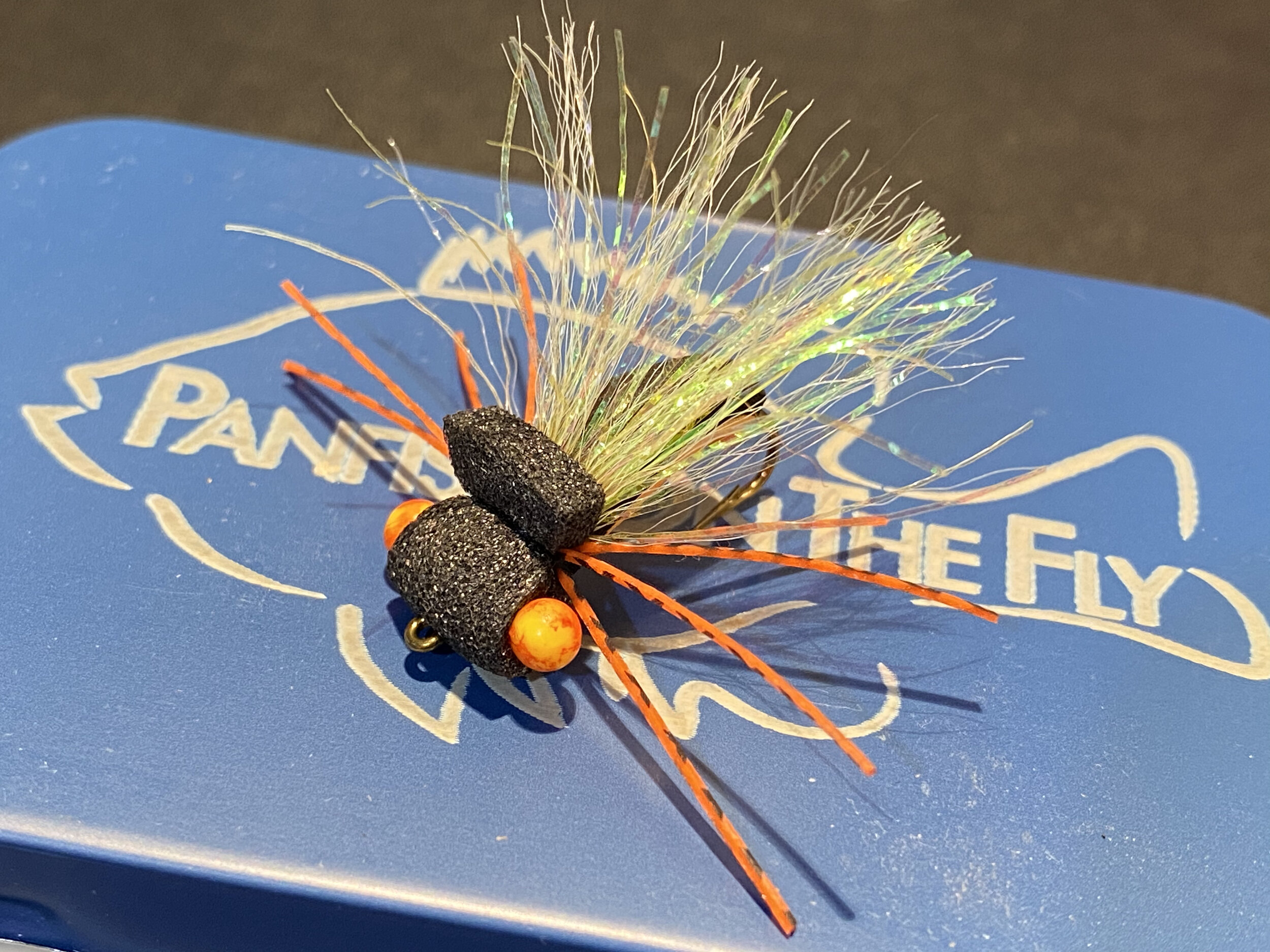In the past, I tied my foam spiders with pre-formed foam spiders or bug bodies. The pre-formed bodies looked and fished great. The problem was always the legs. The best-looking foam spiders had their legs threaded through the body and glued in place. If you did not get it right, the glue would react with the rubber leg material and produce some weird results.
Read moreRed Butt House Fly
The Panfish Version of a fly originally designed for trout.
The Red Butt House Fly is a floating pattern that can imitate a wide range of terrestrial insects. The pattern is a spinoff of a trout fly I tied to imitate the common green bottle fly.
Read moreThe Long Shank Triangle Bug
A Triangle Bug tied on the long shank version of the Triangle Bug Hook. The extra length allows you to dress up the pattern a bit, in this case a little Semperfli Straggle Legs added to cover up the thread wraps securing the tail and body.
At the last two fly tying shows I attended, I had quite a few questions about the unique hook I tie my Triangle Bugs on.
Read moreFly Tying Friday: The Foam Beetle - Panfish Candy!
While foam may not be the ideal material to tie a delicate mayfly or caddisfly, it does a fine job on many terrestrial patterns, particularly beetles. There are somewhere around 400,000 species of beetles crawling around on this planet. In addition, beetles constitute almost 40% of known insect life and 25% of all animal life! So chances are pretty good that a few are going to end up in the water and ultimately in a belly of a fish.
Read moreFly Tying Friday - The Brood X Cicada
If you are a fly fisher, the Brood X Cicada should have crossed your radar by now. The Brood X bug is one of the largest and most widely distributed groups of periodical cicadas. They are scheduled to emerge this spring after spending 17 years underground.
Read more



